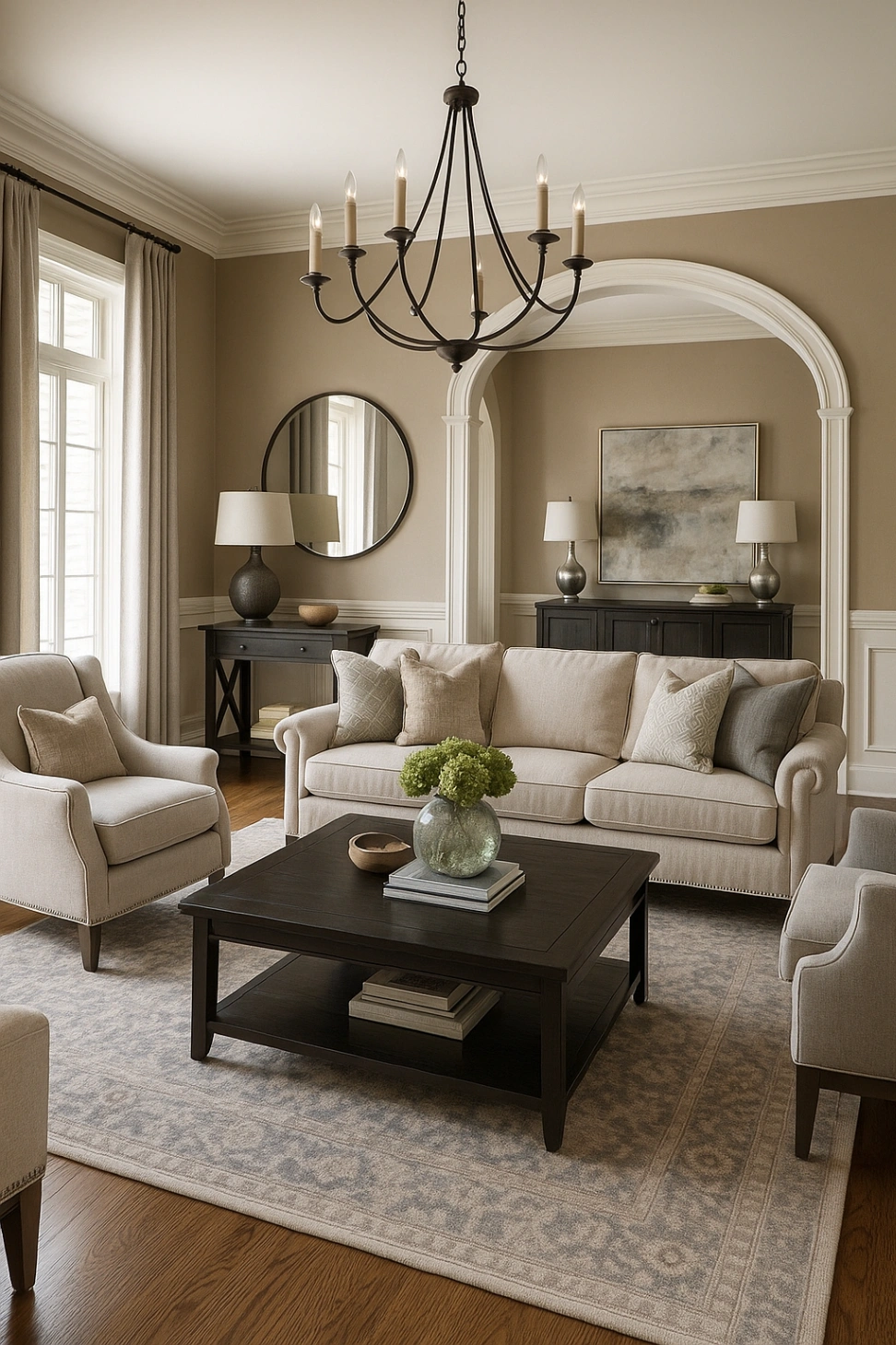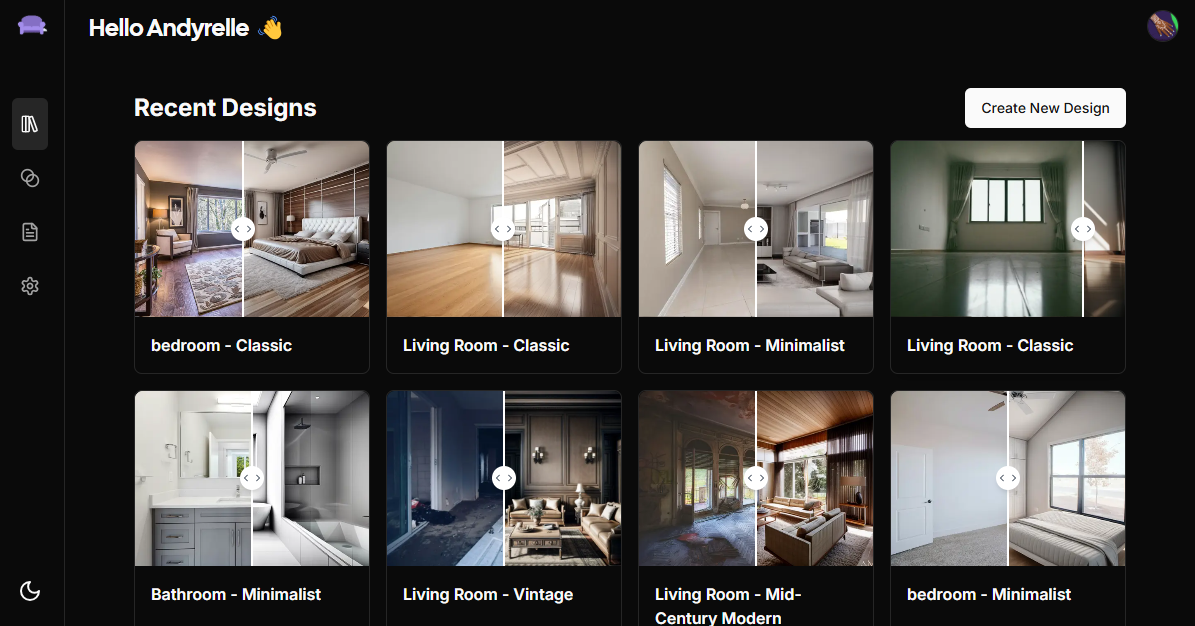
Transitional
A timeless and formal style influenced by 18th and 19th-century European decor. Features classic furniture, rich color palettes, ornate details and symmetrical layouts.
Here’s the thing about transitional style: it doesn’t scream for attention, but it’s never boring either. It’s the friend who always looks polished but never overdone. The one who somehow pulls off jeans and a blazer without trying too hard. You walk into a transitional space and immediately exhale — because it just feels right.
So what is it, really?
Transitional is the bridge between old-school traditional and fresh, modern design. It takes the structure and sophistication of traditional style (think symmetry, classic furniture shapes, crown molding), and softens it with modern minimalism — fewer frills, clean lines and a more relaxed, livable vibe. It’s all about balance. Like, serious harmony. Think of it as the Spotify playlist that can go from Adele to Anderson .Paak without missing a beat.
Color-wise, transitional interiors lean toward neutrals — but not the cold, sterile kind. More like soft ivories, warm taupes, gentle greys. Everything's layered, from texture to tone, creating that “effortlessly cozy but still elevated” feeling. Pops of color do exist here, but they show up quietly: a muted navy armchair, dusty rose pillows, olive green curtains that don’t beg for attention — they just show up and do their job beautifully.
[Furniture(/glossary/category/furniture-and-fixtures) tends to be clean-lined but comfortable. Nothing too ornate, but nothing too stark either. You might see a sleek modern coffee table paired with a classic tufted sofa or traditional wooden nightstands next to minimalist lamps. Transitional style says, “Yes, I like trends. But I’m not chasing them.” It’s timeless, not trendy.
Textures do a lot of the talking here. A mix of smooth leathers and soft linens. Maybe a woven basket tucked under a lacquered console. Glass, wood, metal — but never all fighting for the spotlight. It’s a team sport in transitional design. Everything’s coordinated but not matchy-matchy.
Lighting is clean and classic. A brushed nickel chandelier, maybe a lantern-style pendant, soft-glow sconces — fixtures that add character without dominating the room. Decorative accents are curated and minimal: a ceramic vase, a stack of design books, one bold piece of art instead of a gallery wall of twenty.
Here’s the kicker: transitional isn’t just a style — it’s a mood. It’s for the person who loves structure but craves comfort. Someone who appreciates the past but lives fully in the present. Someone who wants their space to feel fresh today and still look beautiful five years from now.
It’s not flashy. It’s not trying too hard. It’s just right.
And honestly? That’s the real flex.
FAQs
What makes transitional style different from just 'mixing styles'?
Transitional isn't just a free-for-all — it's intentional blending, where the goal is harmony between modern and classic elements.
Is transitional style boring?
Nope. It’s calm, not dull. Think about soothing neutrals, timeless silhouettes and just enough contrast to keep things interesting.
Can transitional interiors have color?
Definitely. You’re not stuck in beige-land — muted blues, soft greens, and warm wood tones all live here comfortably.
What's a must-have piece in a transitional space?
A tailored sofa or a clean-lined table paired with more ornate lighting or accessories usually seals the deal.
Want to see Your Room Transformed in Seconds?
Upload a photo, select your style and let AI redesign your space instantly. Experience the future of home design today!
